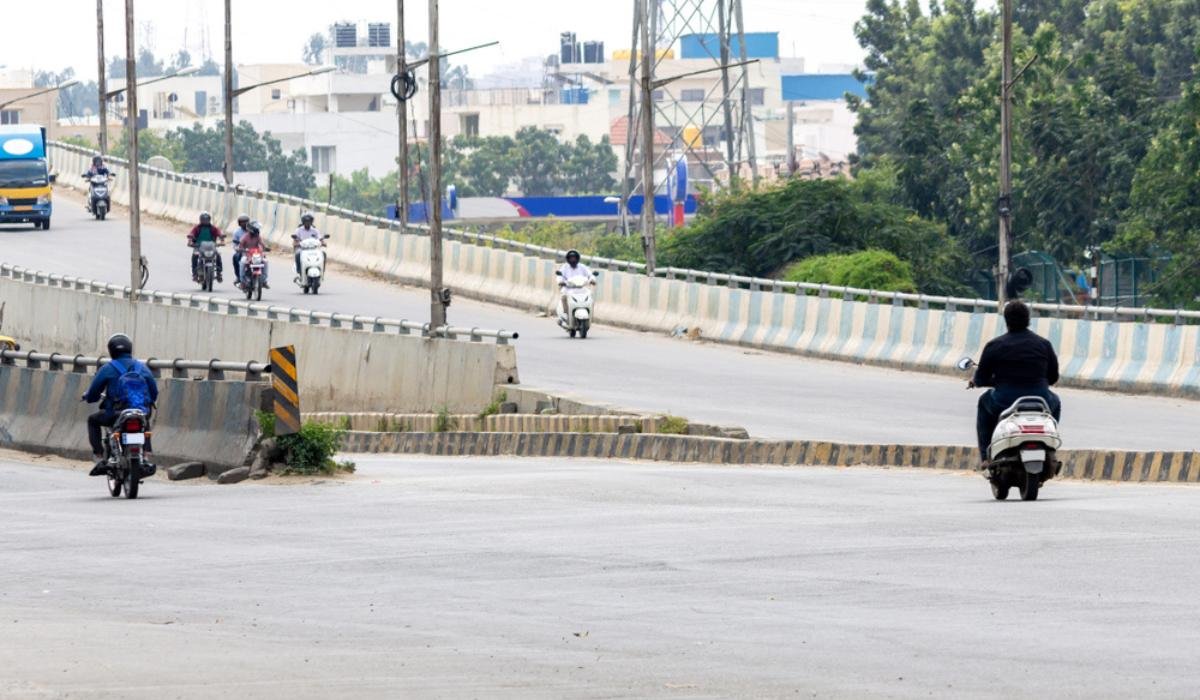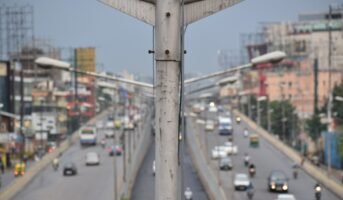The Hebbal Flyover is an important infrastructure landmark in Bangalore. Before its construction, the Hebbal Junction was a major bottleneck, causing severe traffic congestion and hindering the smooth movement of vehicles. With its strategic location, the flyover has reduced traffic congestion and improved connectivity to various parts of the city.
See also: Marathahalli Bridge Bangalore: Importance, features
Hebbal Flyover: Key features
Construction details
The flyover covers a length of 5.2 kilometre (km). It was inaugurated in May 2003.
Flyover structure
● Number of lanes and lane configurations: The flyover incorporates multiple lanes with appropriate lane configurations to ensure smooth traffic flow. It allows for the efficient movement of vehicles, reducing congestion and minimising the risk of accidents.
● Ramps and access points: The flyover includes strategically positioned ramps and access points to enable seamless entry and exit onto the elevated road. These well-planned entry and exit points enhance convenience and contribute to improved traffic management.
Integration with existing road network
● Intersections and traffic flow management: The flyover incorporates intelligent traffic management systems at critical intersections to ensure smooth traffic flow. Advanced signalling mechanisms and real-time monitoring optimise traffic movement and minimise congestion at key junctions
● Pedestrian and cyclist facilities: In addition to catering to vehicular traffic, the Hebbal Flyover includes dedicated pedestrian walkways and cyclist lanes. These facilities ensure the safety and convenience of pedestrians and cyclists, promoting sustainable modes of transportation and creating a more inclusive transport infrastructure.
Safety and security measures
● Lighting and signage: The flyover has efficient lighting systems to ensure visibility during nighttime travel. Clear signage and markings also guide drivers and pedestrians, promoting safe navigation.
● Barrier systems and guardrails: To enhance safety, the flyover incorporates robust barrier systems and guardrails. These safety measures help prevent accidents and ensure the protection of both motorists and pedestrians.
● Surveillance and monitoring systems: The Hebbal Flyover features a comprehensive surveillance and monitoring system comprising CCTV cameras and sensors. It allows authorities to monitor traffic conditions, identify potential bottlenecks and take timely action to address any issues.
Hebbal Flyover: Impact and benefits
● Reduction in travel time and delays: The Hebbal Flyover has significantly reduced travel time for commuters, enabling them to reach their destinations faster. The flyover has minimised delays by eliminating bottlenecks and streamlining traffic flow, particularly during peak hours.
● Improved traffic flow and capacity: Integrating the Hebbal Flyover into Bangalore’s transportation network has greatly enhanced traffic flow and capacity. It has effectively redistributed the traffic load, relieving congestion on the ground-level roads and ensuring a smoother commuting experience.
● Enhancing connectivity to nearby areas: The flyover’s strategic location has improved connectivity between various areas in Bangalore. It has opened up new avenues for residents and businesses by providing efficient and convenient access to different parts of the city.
● Reduction in air pollution and carbon emissions: The Hebbal Flyover has significantly reduced vehicular idling time, decreasing air pollution and carbon emissions.
FAQs
How does the Hebbal Flyover enhance connectivity in Bangalore?
The Hebbal Flyover integrates with the existing road network, connecting major roads, highways, and arterial routes in Bangalore. This integration improves accessibility and connectivity to various parts of the city.
How does the Hebbal Flyover manage traffic flow?
The flyover incorporates intelligent traffic management systems at critical intersections, including advanced signalling mechanisms and real-time monitoring. These systems optimise traffic movements and minimise congestion at key junctions.
What safety and security measures are in place on the Hebbal Flyover?
The flyover is equipped with effective lighting systems, clear signage, robust barrier systems, guardrails and a comprehensive surveillance and monitoring system comprising CCTV cameras and sensors.
What are the benefits of the Hebbal Flyover?
The Hebbal Flyover brings several benefits, including reduced travel time and delays, improved traffic flow and capacity, enhanced connectivity to nearby areas, facilitation of commerce and trade and boost to local businesses and industries.
| Got any questions or point of view on our article? We would love to hear from you. Write to our Editor-in-Chief Jhumur Ghosh at [email protected] |
Housing News Desk is the news desk of leading online real estate portal, Housing.com. Housing News Desk focuses on a variety of topics such as real estate laws, taxes, current news, property trends, home loans, rentals, décor, green homes, home improvement, etc. The main objective of the news desk, is to cover the real estate sector from the perspective of providing information that is useful to the end-user.
Facebook: https://www.facebook.com/housing.com/
Twitter: https://twitter.com/Housing
Email: [email protected]











